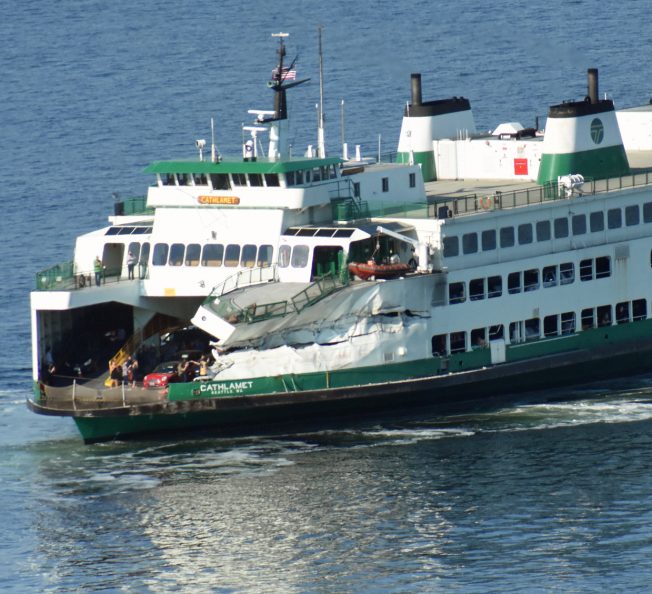Fatigue and Complacency to Blame for Ferry Accident

Back in July 2022, a Washington State Ferries passenger and car ferry collided with a mooring structure (called a terminal dolphin) about 35 feet south of its intended docking terminal. At the time of the collision, the ferry was moving at 15.7 knots or roughly 18 mph. No warnings were sounded, so the ship’s quartermaster rushed to see what was happening with the vessel’s captain. Once he arrived he found a confused captain asking “What happened?”
The accident resulted in a deck collapse, sending portions of the structure onto a parked car aboard the ferry, narrowly missing the passenger seated inside.
Fortunately, only one minor injury was reported, but the damages totaled $10.3 million.
The Cathlamet’s quartermaster averted further disaster by alerting the confused captain to reverse course as the ferry moved closer to other vessels.
Immediately following the incident, the ship’s captain was administered a post-crash drug and alcohol test, with both coming back negative. Cell phone usage was also ruled out. However, a review of the captain’s work/rest history revealed that the captain was not getting adequate sleep. Crewmembers reported that the captain was seemingly tired every morning. In an interview with investigators, the captain confessed that his lack of sleep was from stress brought on by unusually hot weather conditions and a family member’s recent medical condition and diagnosis.
The day after the crash the captain retired from Washington State Ferries.
Additionally, investigators found the Cathlamet bridge team complacent for not complying with company policies regarding docking and undocking the ferry. The ship’s quartermaster also failed to actively monitor the captain during docking, as was his assigned responsibility.
The National Transportation Safety Board that worker fatigue and complacency should have been addressed, and would have prevented the incident from occurring. NTSB has suggested that complacency and fatigue can best be combatted at the workplace with a clearer focus on procedure.
What do you think about NTSB’s findings?
Blog Posts
Latest Posts
Related Posts




